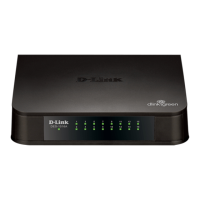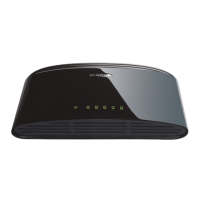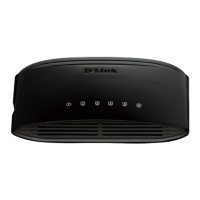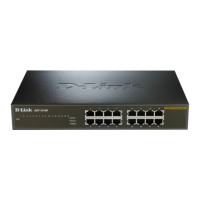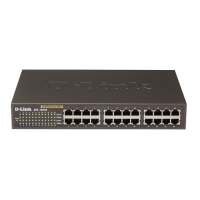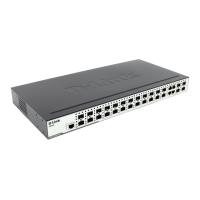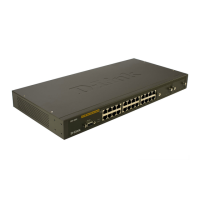DES-1228/ME Layer 2 Fast Ethernet Managed Switch
178
Login Method Lists
This command will configure a user-defined or default Login Method List of authentication techniques for users logging on to the
Switch. The sequence of techniques implemented in this command will affect the authentication result. For example, if a user
enters a sequence of techniques, for example TACACS – XTACACS - local, the Switch will send an authentication request to the
first TACACS host in the server group. If no response comes from the server host, the Switch will send an authentication request
to the second TACACS host in the server group and so on, until the list is exhausted. At that point, the Switch will restart the same
sequence with the following protocol listed, XTACACS. If no authentication takes place using the XTACACS list, the local
account database set in the Switch is used to authenticate the user. When the local method is used, the privilege level will be
dependant on the local account privilege configured on the Switch.
Successful login using any of these techniques will give the user a "User" privilege only. To upgrade his or her status to the
administrator level, the user must use the Enable Admin window, in which the user must enter a previously configured password,
set by the administrator. (See the Enable Admin part of this section for more detailed information concerning the Enable Admin
command.)
To view the following window click Security > Access Authentication Control > Login Method Lists:
Figure 10-36. Login Method Lists Settings window
The Switch contains one Method List that is set and cannot be removed, yet can be modified. To delete a Login Method List
defined by the user, click the
under the Delete heading corresponding to the entry desired to be deleted. To modify a Login
Method List, click on its hyperlinked Method List Name. To configure a new Method List, click the Add button.
Both actions will result in the same window to configure:
Figure 10-37. Login Method List - Edit window (default)

